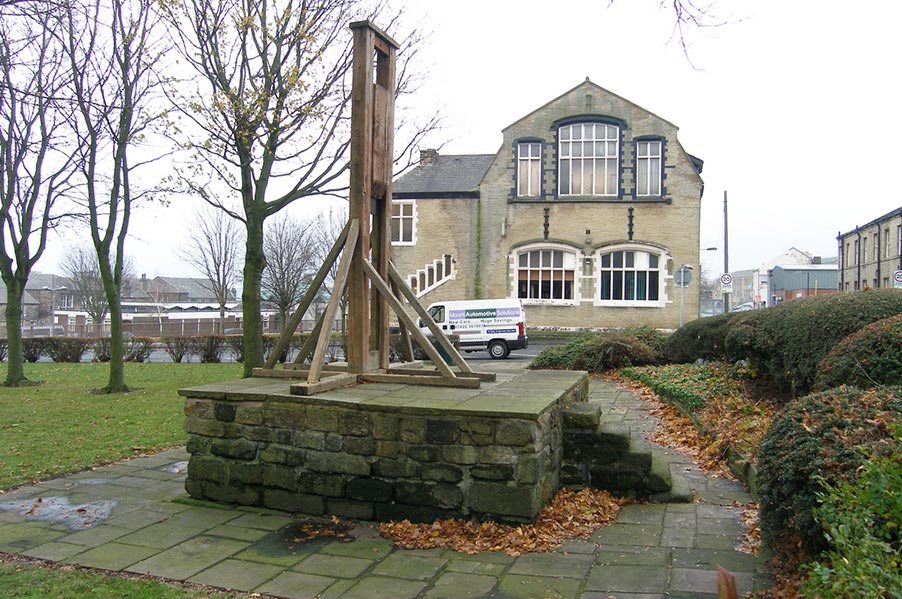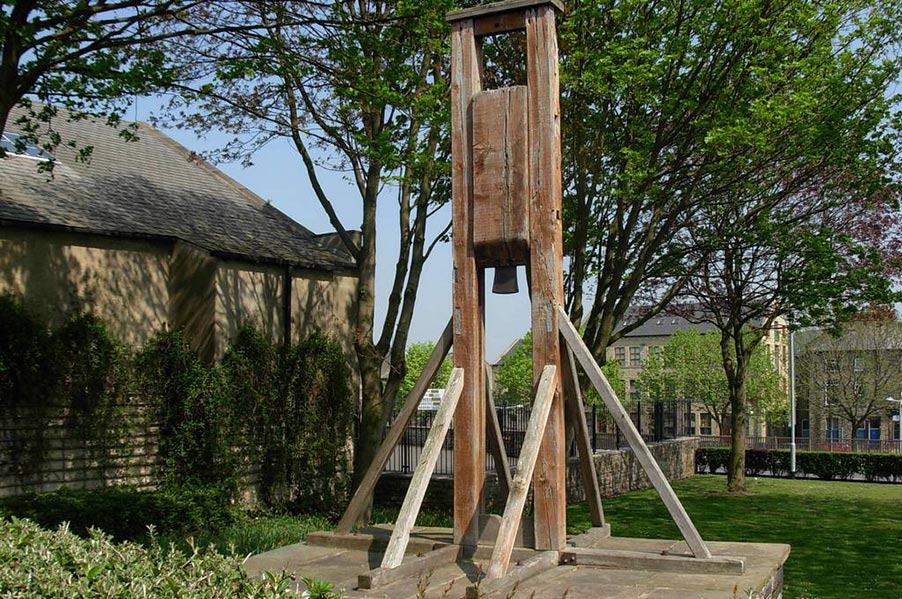- Home
- Halifax
- Halifax Entries
- Halifax Gibbet
Description
The Halifax Gibbet consisted of an axe head fitted to the base of a heavy wooden block that ran in grooves between two 15-foot (4.6 m) tall uprights, mounted on a stone base about 4 feet (1.2 m) high. A rope attached to the block ran over a pulley, allowing it to be raised, after which the rope was secured by attaching it to a pin in the base. Once the prisoner was in place, the block carrying the axe was then released by either withdrawing the pin or by cutting the rope.
Almost 100 people were beheaded in Halifax between the first recorded execution in 1286 and the last in 1650, but as the date of the gibbet's installation is uncertain, it can't be determined with any accuracy how many were dealt with by the Halifax Gibbet. By 1650 public opinion considered beheading to be an excessively severe punishment for petty theft and use of the gibbet was forbidden by Oliver Cromwell, Lord Protector of the Commonwealth of England. The Gibbet was subsequently dismantled.
The stone base was rediscovered and preserved in about 1840, and the (non-working!) replica you can visit today was erected on the site in 1974. The names of 52 people known to have been beheaded by the device are listed on a nearby plaque.

